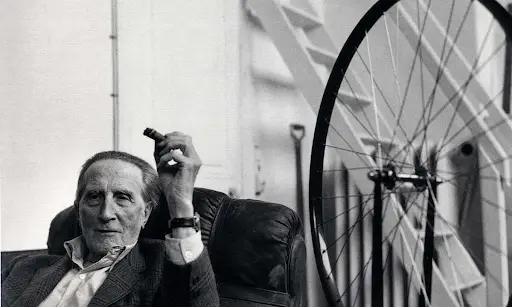Contemporary art: unexpected content and new interpretation

The work of contemporary artists often arouses surprise or doubt. A few centuries ago, art was just a decorative ornament. Today, it has taken on the role of a translator of experience, thoughts and ideas, replacing the usual reproduction of visual images.
A radical change occurred in the early twentieth century, when the development of technology deprived the simple copying of images of its value. Artists began to study light, color, form, and the essence of art, says The Village .
This led to the emergence of many new movements, from expressionism to suprematism. In general, the movements of the first half of the twentieth century are often called "modern", and those of the second and twenty-first centuries - "contemporary". The term "contemporary art" is usually associated with contemporary art, although its roots belong to the modernists, and there is still no unambiguous classification. But the principles of perception of both eras are similar in many ways.
The meaning of the word "artist" has also changed over time. A painter creates paintings, but there are also photographers, sculptors, and graphic artists. These are all genres of fine art that can be one of the tools of a contemporary artist. Sometimes there may not even be any: installations, readymades, action art are also art. Contemporary art can take the form of a fur bowl, a sewn-up mouth, or even an empty room.
Nowadays, it is not necessary to paint, sculpt or draw to become an artist. It is possible and even necessary to invent new forms and tools. The main thing is context and interpretation. Sometimes you can be able to draw, but not become a contemporary artist. A painting in a souvenir shop or on St Andrew's Descent may be nice, but it is not always art. In the twenty-first century, there is no point in simply copying pastoral scenes or Impressionist subjects. There is nothing new in this, either in form or content.
On the contrary, Marcel Duchamp's "Bicycle Wheel" is already art, even though it is just a wheel. And the artist did not even make it himself, but simply exhibited the finished object. Nevertheless, in the early twentieth century, he was the first to move an ordinary object from a domestic context to an artistic one. It is true that nowadays it may not make sense to exhibit an iron or a stool. But if the artist looks at them from a different perspective, creates something new, conveys his or her own idea, then it will make sense.
Nowadays, an artist can be primarily someone who lives in a contemporary context and has his or her own vision. Contemporary art encourages the viewer to engage in a dialogue, it speaks about current phenomena and problems of society. Therefore, it is important to first understand these processes and what is happening in art itself.
A contemporary artist needs courage, sometimes even recklessness. For example, actionists use their own bodies as a tool. For example, Marina Abramovic in her performance Rhythm 0 gave her body to the audience, allowing them to use 72 objects, including a gun and a knife. And Piotr Pawlenski sewed his mouth shut with a coarse thread as an act of protest against censorship and repressive policies. However, not all artists have to test themselves, but they should not be afraid to experiment, challenge and talk about difficult topics.









